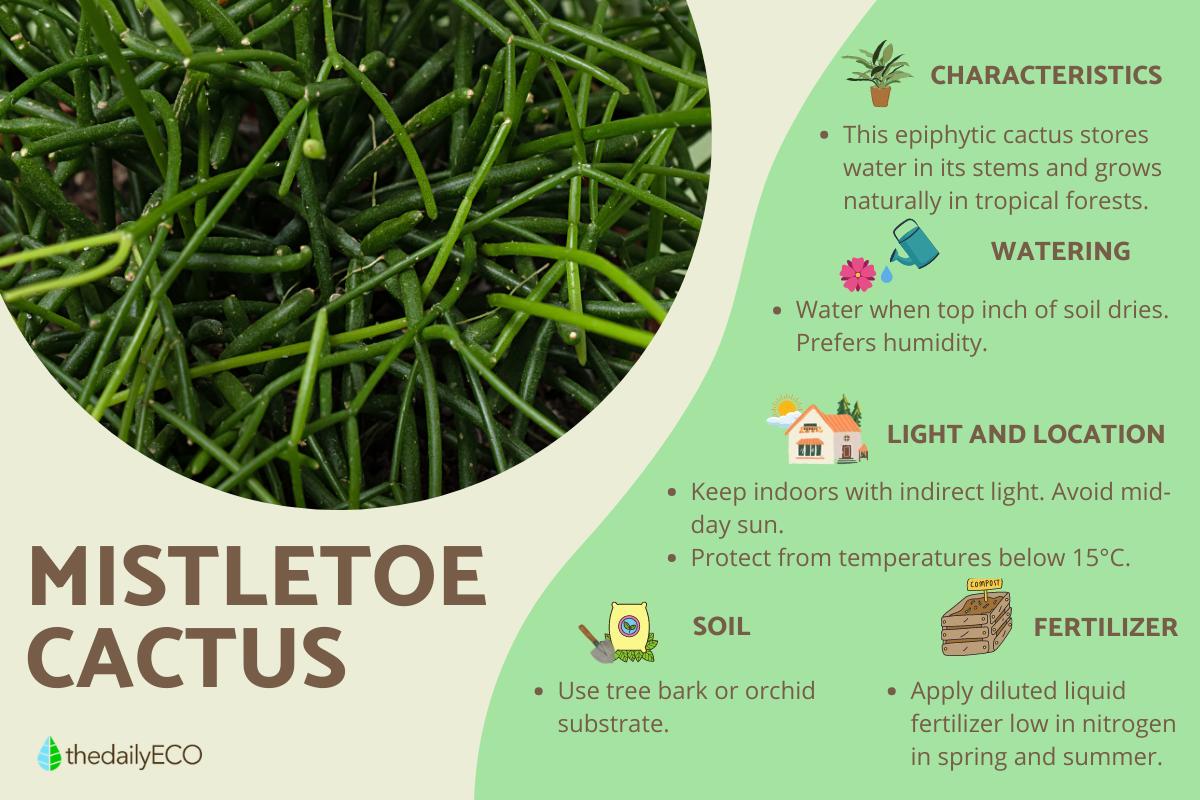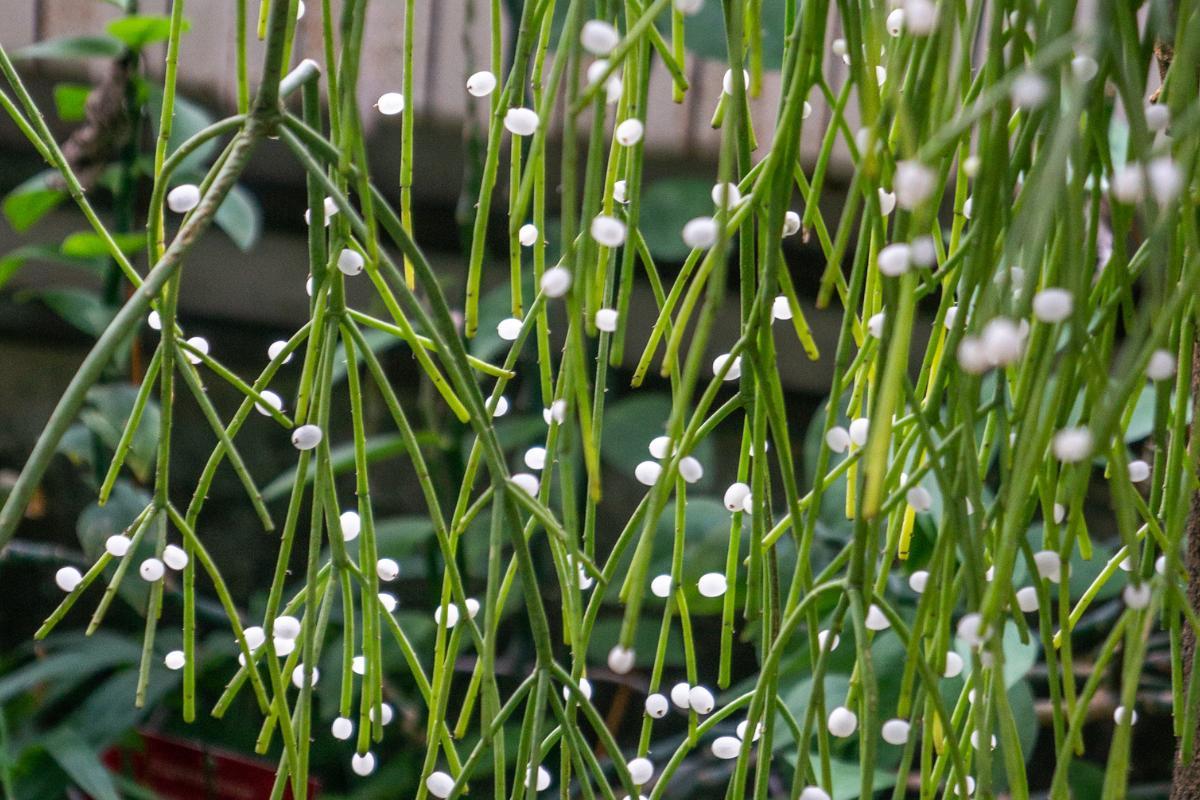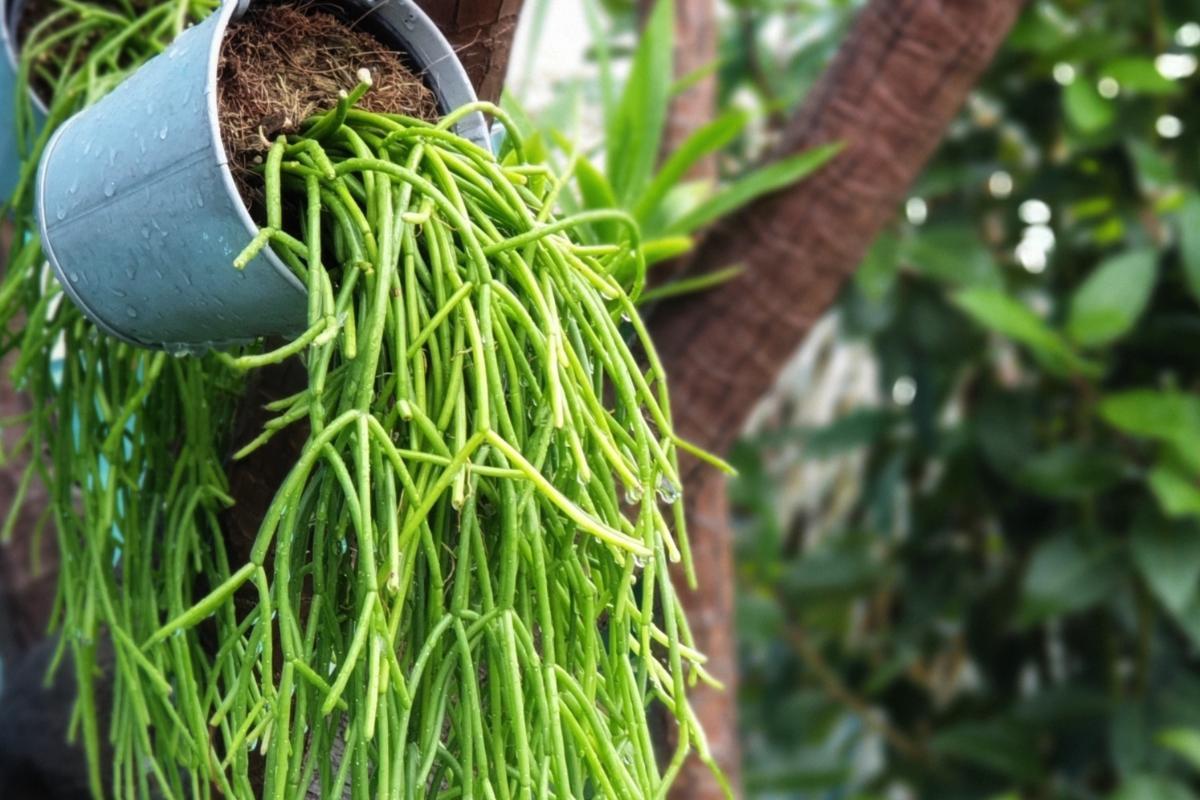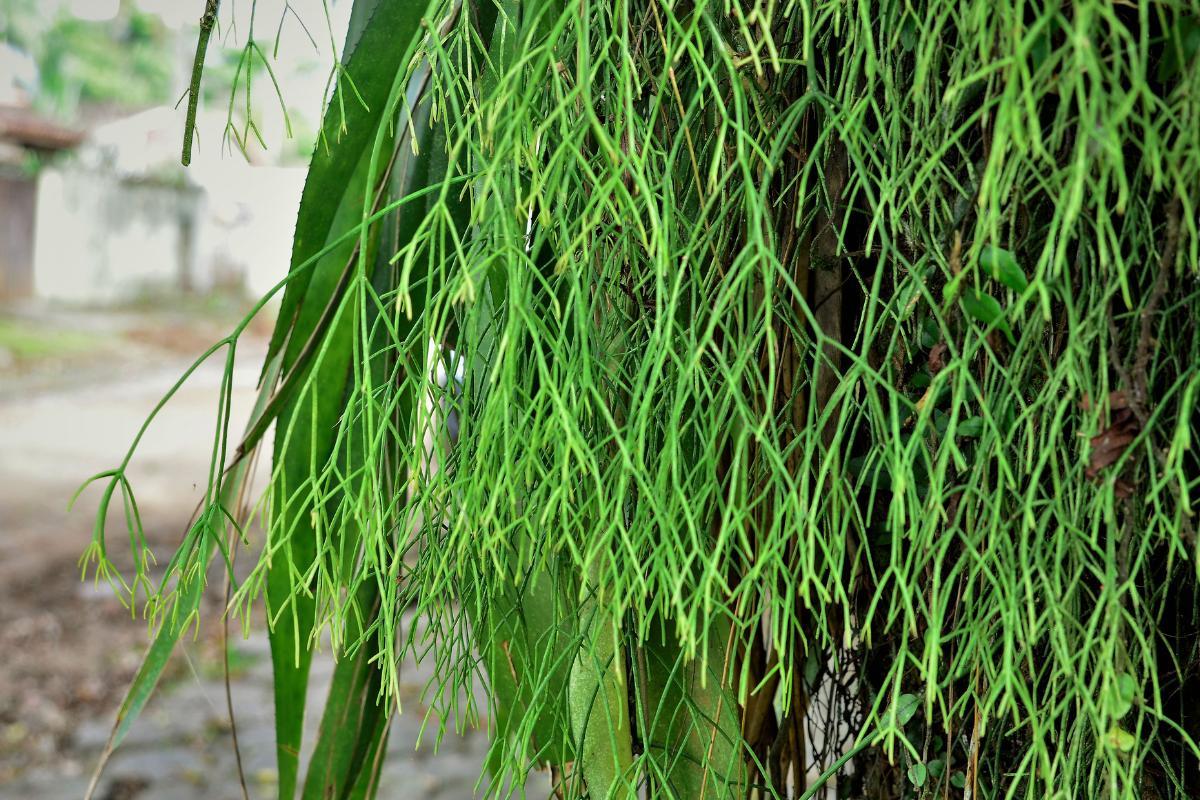Mistletoe Cactus or Rhipsalis Baccifera Care Guide


Rhipsalis Baccifera, also known as the mistletoe cactus, is a stunning, low-maintenance houseplant perfect for any indoor garden. With its cascading stems and unique appearance, this epiphytic cactus adds a touch of greenery to any space. But how do you ensure it thrives?
In this article by thedailyECO, you'll learn everything about Rhipsalis Baccifera care, including the best watering practices, propagation methods, and essential tips to keep your plant healthy year-round.
Characteristics of Rhipsalis baccifera
This mistletoe cactus stores water in its stems like other cacti do. It's the only cactus species that naturally occurs outside the Americas, growing in tropical rainforests across Central and South America, parts of Africa, and Sri Lanka. Let us take a look at its characthersitics:
- Its long, thin tubular stems (called cladodes) hang down and branch out extensively.
- Young stems have small wool-like spines that fall off as they mature.
- The stems produce small white berries, which earned it the nickname "Saint Peter's tears".
- This plant is perennial, living year-round.
- As an epiphyte, it naturally grows on tree branches rather than in soil.
- You can grow it as a small desk plant, but in larger containers, it can reach up to 10 meters (6 feet) long.
- The plant flowers during spring and summer with small white blooms before producing its berries.
- It propagates easily from stem cuttings.
- Some people use Rhipsalis baccifera in traditional medicine to help manage diabetes and high blood pressure.

Optimal growing environment
In its native environment, it grows under the canopy of trees. Mimic these conditions by keeping it indoors, where it receives only indirect light.
It does not tolerate mid-day sun, so place it in an area where it receives morning or afternoon sun. If given too much light, the stems will begin to turn yellow and wrinkle.
They are typical of warm, tropical climates. In places where the winter temperature drops below 15°C, it is necessary to bring it indoors so that the cold does not destroy it.
Place it in a high place, such as hanging pots, or on shelves and ledges, considering that it will hang. It thrives very well next to sources that humidify it, or in the bathroom.
Substrate and fertilization
Since it is a plant that grows on tree bark, it should be given a similar substrate. You can use tree bark, with slow-release fertilizer beads, or get a prepared substrate for orchids in gardening stores.
A diluted liquid fertilizer low in nitrogen can be added during the growing season, in spring and summer.

Watering and humidity
Being a succulent, it requires very little watering because it stores water within its tissues as a reserve. It can be watered once a week, and increase to twice in the hot season.
The indication that it is lacking water is that the stems will begin to wrinkle, due to a lack of turgor, which is the force that water imposes inside the plant cells. As for humidity, spray water on it frequently. It also enjoys occasional baths, where you will wet the entire plant.
Pruning
Pruning mistletoe cactus should be done when the plant is already too long and exceeding the space you intended for it. To do this, cut the stems. You can save them to propagate them as we show you later.

Propagation
There are two main methods to propagate this plant:
Seeds:
Seeds can be obtained from specialist gardening shops, or from already ripened fruit.
- Place the seeds in a seedbed containing worm humus, and cover so that the soil is 1 centimeter deep.
- Keep the substrate moist, and covered with plastic wrap to retain both heat and moisture.
- Once it reaches a height of 15 centimeters, transfer it to its final location, with substrate prepared as mentioned above.
Cuttings:
For this method you need to choose a healthy mother plant. Then:
- Cut a stem with well-washed and disinfected tools.
- Let it sit in the air for two days so that it forms a callus and does not rot in the next step.
- Place directly in a substrate prepared with worm humus and perlite in equal parts.
- Make sure it is deep enough.
- Water to keep the substrate moist.
Once you see new growth, transfer the plant to its final substrate. It should be done in spring or summer so that the plant does not suffer.
Pests and diseases
It is prone to root rot, due to overwatering or poorly prepared substrate. This will also manifest itself as overly watery stems that crumble to the touch. If you notice this issue, reduce watering immediately and check the drainage of your pot. You may need to repot the plant in fresh, well-draining medium after trimming away any rotted roots.
You can get mealybugs as a pest, which are small insects about 5 millimetres in size that look like a clump of white powder. They weaken the plant by sucking the sap, and are usually found attached around the stems. To avoid them, you should remove all the dead parts of the plant where they lay eggs. If mealybugs appear, you can remove them with a cotton swab dipped in rubbing alcohol or treat the plant with insecticidal soap. Regular inspection of your plant helps catch infestations early.
Spider mites can also affect Rhipsalis, especially in dry conditions. These tiny pests create fine webbing between stems and cause yellowing. Increasing humidity and regular misting can help prevent them.
Finally, fungal issues may develop in overly humid conditions with poor air circulation. Ensure your plant has adequate airflow and avoid wetting the stems when the temperature is cool.

If you want to read similar articles to Mistletoe Cactus or Rhipsalis Baccifera Care Guide, we recommend you visit our Plant care and cultivation category.
- Domínguez-Barradas, C., Cruz-Morales, G., & González-Gándara, C. (2015). Medicinal plants from the "Sierra de Otontepec" Ecological Reserve, municipality of Chontla, Veracruz, Mexico. CienciaUAT , 9 (2), 41-52.
- Uhlig, M. (2008). Cactus and other succulents. Spain: Editorial Hispano Europea, SA.









